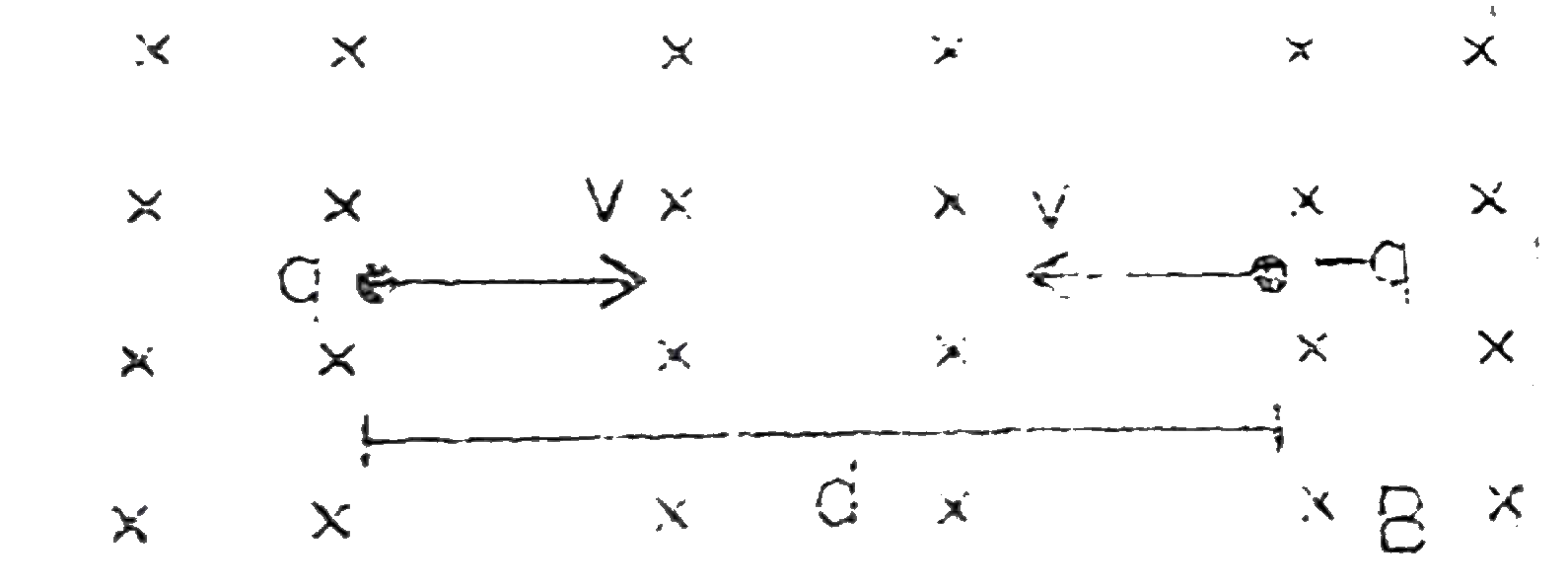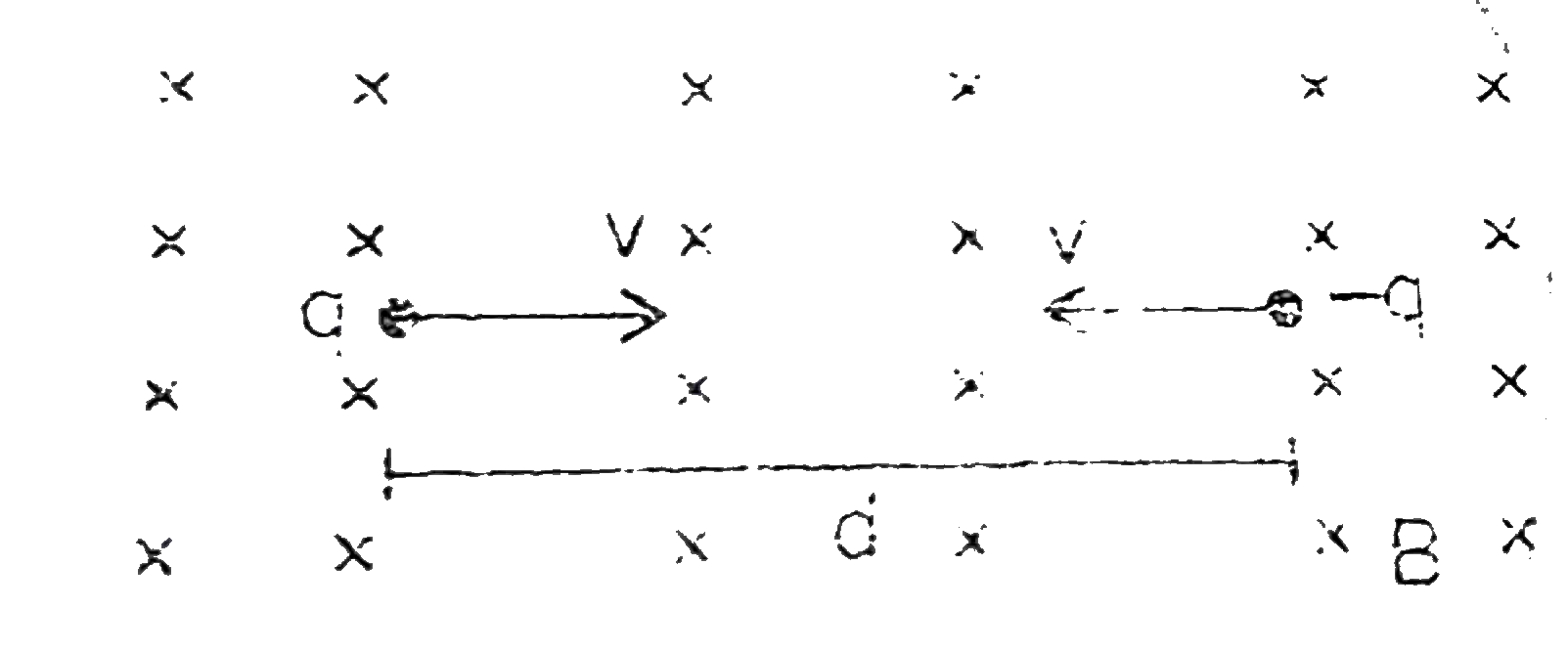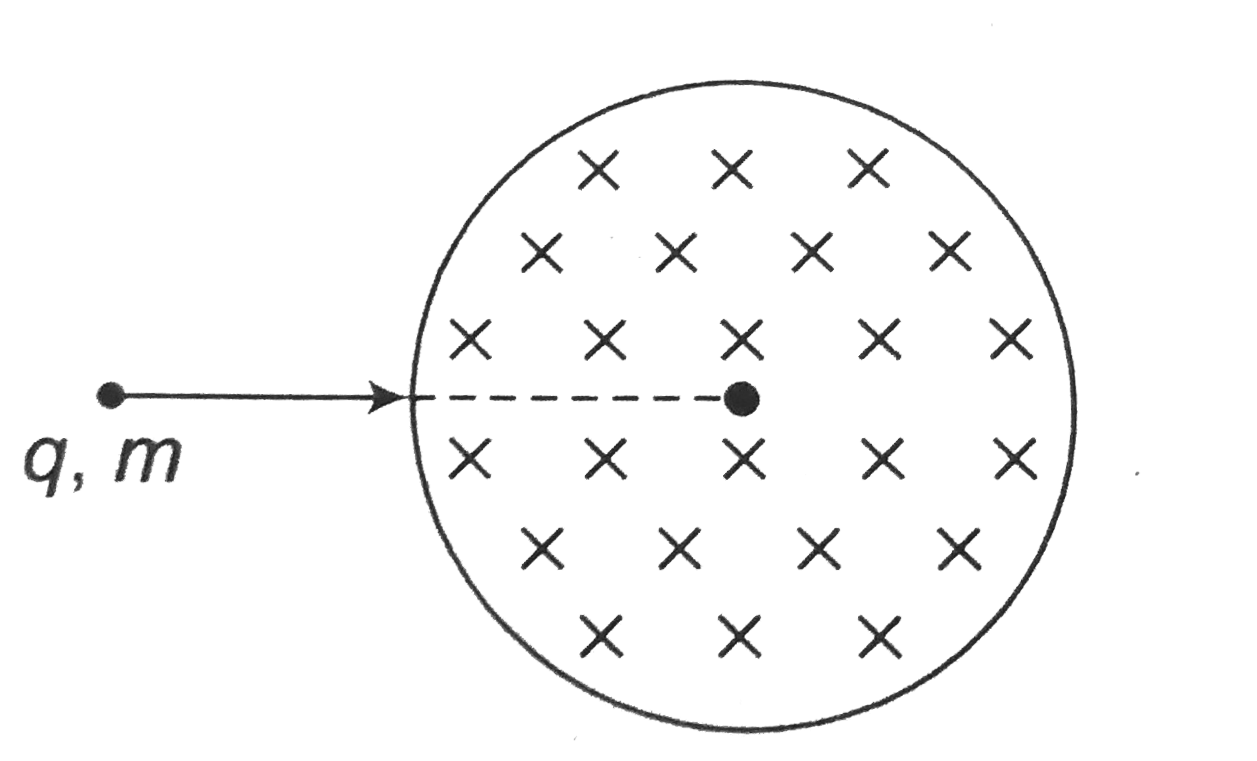A particle having specific charge s is projected in xy plane with a speed V. There exists a uniform magnetic field in z direction having a fixed magnitude B0. The field is made to reverse its direction after every interval of 2πσB . Calculate the maximum separation between two positions of the particle during its course of motion.
The correct Answer is:4vσB0
Step by step video, text & image solution for A particle having specific charge s is projected in xy plane with a speed V. There exists a uniform magnetic field in z direction having a fixed magnitude B0. The field is made to reverse its direction after every interval of (2pi)/(sigmaB) . Calculate the maximum separation between two positions of the particle during its course of motion. by Physics experts to help you in doubts & scoring excellent marks in Class 12 exams.
Topper's Solved these Questions
- BOOK - ARIHANTCHAPTER - MOTION OF CHARGE IN MAGNETIC FIELDEXERCISE - Level-213videos
MOTION OF CHARGE IN MAGNETIC FIELD
- BOOK - ARIHANTCHAPTER - MOTION OF CHARGE IN MAGNETIC FIELDEXERCISE - Level-34videos
MOTION OF CHARGE IN MAGNETIC FIELD
- BOOK - ARIHANTCHAPTER - MAGNETIC EFFECT OF CURRENTEXERCISE - Magnetic effect of Current45videos
MAGNETIC EFFECT OF CURRENT
- BOOK - ARIHANTCHAPTER - NUCLEAR PHYSICSEXERCISE - All Questions54videos
NUCLEAR PHYSICS
Similar Questions
A particle having mass m and charge q is projected with a velocity v making an angle q with the direction of a uniform magnetic field B. Calculate the magnitude of change in velocity of the particle after time t=πm2qB.
View SolutionA particle of specific charge α is projected from origin with velocity v=v0ˆi−v0ˆk in a uniform magnetic field B=−B0ˆk. Find time dependence of velocity and position of the particle.
View Solution
Knowledge Check
- Question 1 - Select One
A charged particle (charge q, mass m) has velocity v0 at origin in +x direction. In space there is a uniform magnetic field B in -z direction. Find the y coordinate of particle when is crosses y axis.
Amv0qBB2mv0qBCmv02qBDNone of these - Question 2 - Select One
Two particle, each having a mass m are placed at a separation d in a uniform magnetic field B as shown in figure.They have opposite charges of equal magnitude q.At time t=0, the particles are projected towards each other, each with a speed v.
What would be the maximum separation between the particles if v=vm4?
 A5d2B5d4Cd4D3d4
A5d2B5d4Cd4D3d4 - Question 3 - Select One
A charged particle is fired at an angle θ to a uniform magnetic field directed along the x-axis. During its motionalong a helical path, the particle will
Anever move parallel to the x-axisBmove parallel to the x-axis once during every rotation for all velues of θCmove parallel to the x-axis at least once during every rotation if θ=45∘Dnever move perpendicular to the x-direction
A uniformly charged ring having linear charge density λ is rotating in X-Y plane with uniform angular speed o about its own axis inside the uniform magnetic field B along the y direction. The magnitude of maximum torque acting on the ring about its diameter is
View SolutionA particle having mass m and charge q is projected at an angle of 75° to the horizontal with a speed u. A uniform electric field E=mgq exists in horizontal direction. Find the time after projection when the velocity of particle makes an angle of 45° with horizontal.
View SolutionTwo particle, each having a mass m are placed at a separation d in a uniform magnetic field B as shown in figure.They have opposite charges of equal magnitude q.At time t=0, the particles are projected towards each other, each with a speed v.
What would be the minimum separation between the particles if v=vm4?
 View Solution
View SolutionA particle of mass m and positive charge q is projected with a speed of v0 in y–direction in the presence of electric and magnetic field are in x–direction. Find the instant of time at which the speed of particle becomes double the initial speed.
View SolutionA particle having mass m, charge q enters a cylindrical region having uniform magnetic field B in the inward direction as shown. If the particle is deviated by 60∘ as it emerges out of the field then what is the time spent by it in the field?
 View Solution
View Solution

